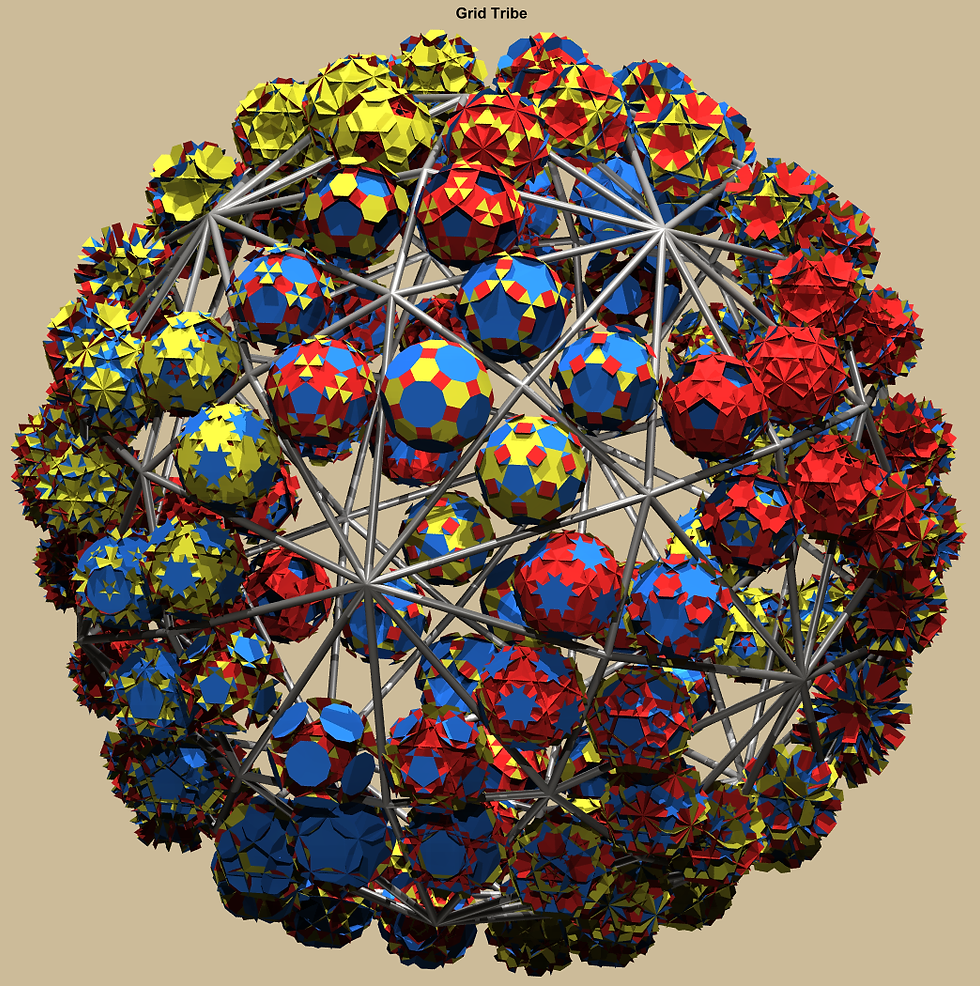How Remote Viewing Might Work Without Breaking Physics
- Gabriel Boboc

- May 7
- 4 min read
Subtitle: Why "Everything Contains Everything" Is Misleading, and What Quantum Entanglement Can Teach Us About Consciousness
Introduction
You’ve probably heard the claim that in our universe, “everything contains information about everything.” It’s a fascinating idea, often used to explain things like remote viewing (RV) or mystical insights. But there’s a problem: this idea doesn’t match up with how our universe actually works. In fact, if it were true in a literal sense, physics tells us we’d be surrounded by black holes!
So how do we make sense of extraordinary phenomena like remote viewing — without defying the laws of physics? In this article, we explore a more grounded model. One that uses concepts like quantum entanglement and weak measurements, and places consciousness as a central player. Most importantly, it stays within the rules of physics, including something called the Bekenstein bound.
Why the "Everything Contains Everything" Idea Breaks Down
Imagine trying to store even a small amount of data — like one single bit — from every atom and every event in the universe, inside a single location. It sounds amazing, but it runs into a massive problem: information overload.
According to physics, there’s a hard limit on how much information you can cram into a space before it collapses into a black hole. This limit is called the Bekenstein bound. It’s a formula that shows how energy and space limit the amount of information (or entropy) that can exist in a region without breaking down.
The Bekenstein bound is given by:
I ≤ (2πkRE)/(ħc ln 2)
Where:
I is the information in bits,
k is the Boltzmann constant,
R is the radius of the region,
E is the total energy (including mass energy),
ħ is the reduced Planck constant,
c is the speed of light.
Now, let’s apply this to the universe:
Estimated radius of the observable universe: ~4.4 × 10²⁶ meters
Estimated total mass-energy: ~10⁵³ kg
This gives a total information capacity of about 10¹²² bits for the entire observable universe.
But here’s the problem: if we take the claim “everything contains information about everything” literally, then every point or atom would have to store 10¹²² bits. Multiply that by the number of atoms (~10⁸⁰), and you get a total information requirement of 10²⁰² bits, which is absurd — it would far exceed the Bekenstein bound by many orders of magnitude.
This level of data redundancy would collapse space itself into black holes everywhere. The physics simply doesn’t allow it.
Enter Entanglement: Connection Without Copying
Here’s where things get interesting. Quantum entanglement doesn’t replicate data across space — it links systems so that what happens to one affects the other, instantly. But crucially, it doesn’t store all the data locally.
Think of it like a relationship: two people in different places can have a strong emotional connection without literally carrying copies of each other’s thoughts. That’s how entanglement works.
Remote viewing, if it’s real, might not involve downloading distant data into your brain. Instead, it could mean tapping into these nonlocal links, using the structure of space and entanglement as a bridge.
This avoids the redundancy problem completely — because no data is being copied, and therefore, the Bekenstein bound is respected.
What About Weak Measurements?
In quantum mechanics, a “weak measurement” is a gentle way to probe a system without breaking it or collapsing it completely. It’s like gently feeling the warmth of a cup without picking it up. These measurements give you a blurry but useful glimpse into a quantum system.
If remote viewing uses something like weak measurements — tuning into information without fully disrupting it — then maybe that’s how consciousness accesses distant information without needing a local copy. You don’t store the data, you glance at it through a quantum window.
Consciousness as the Key Player
Now here’s a bold but exciting idea: What if consciousness isn’t just a byproduct of physics, but a kind of active agent that can interact with space in subtle ways?
In this view:
Consciousness can generate entanglement between places.
It can perform weak measurements that allow information access.
And it does all this without violating any physical limits.
This would explain why remote viewers often describe the process as a kind of intuitive tuning or focusing. They’re not pulling data from everywhere — they’re accessing correlations already present in the structure of space.
Importantly, this model also allows for growing entropy in the universe without breaking conservation laws. As weak measurements occur and entanglement shifts, the overall system’s entropy may increase — aligning with the second law of thermodynamics.
Wrapping It All Up
The universe is strange and wonderful, but it’s also governed by deep physical laws. The idea that “everything contains everything” may sound poetic, but taken literally, it breaks down under scrutiny.
Instead, by understanding entanglement, weak measurements, and the role of consciousness, we can build a framework for remote viewing that’s both mysterious and scientifically grounded. One that respects the limits of space and energy — and maybe even points toward new understandings of what consciousness really is.
If you're curious about these ideas, consider diving into quantum mechanics, information theory, and the growing field of consciousness studies. The next great breakthrough may lie at the intersection of all three.




Comments